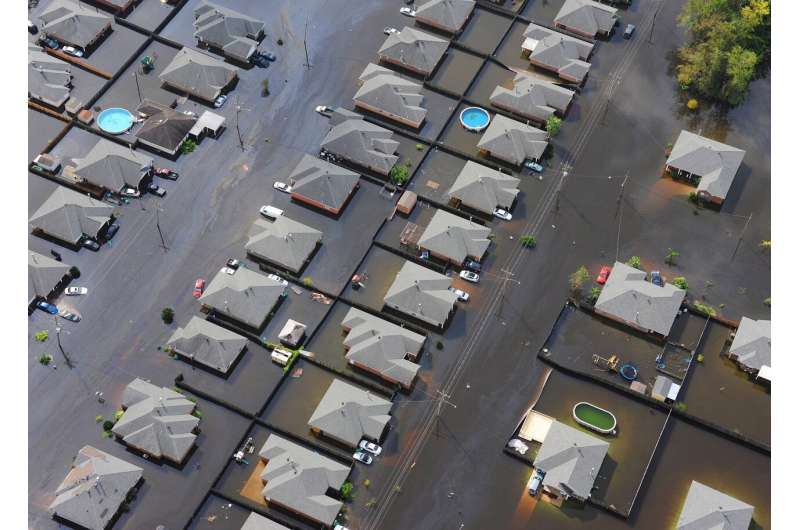Vulnerable communities face higher risk of socioeconomic injustice due to flood hazards

Socially vulnerable groups are at greater risk from climate-change-caused flooding because of systemic disadvantages, according to a new study published in Environmental Research.
The study also reveals that neighborhood-level racial or ethnic, economic, social, and demographic factors play a significant explanatory role in the distribution of flood risk across Canadian neighborhoods.
The study led by Liton Chakraborty, a researcher at the University of Waterloo's Partners for Action, in collaboration with other Waterloo researchers, found that traditionally-recognized socially vulnerable groups in Canada, such as females, persons living alone, Indigenous, South Asians, the elderly (age 65 and over), other visible minorities, and economically insecure residents bear a disproportionate burden of inland and coastal flood risks.
"This research fills the gap of analyzing and addressing flood-related socioeconomic discriminations while considering divisibility aspects of flood hazards and contributes to the emergent and quantitative environmental justice literature on flood-related socioeconomic disparities," Chakraborty said.
The study utilized national datasets of flood hazards, residential address points, census of population, and census tract (CT)-level cartographic boundaries to determine flood vulnerable neighborhoods and the number of residential properties exposed to river, periodic rainfalls, and coastal flooding across 4,458 CTs in Canada.
By examining whether the types of flood hazard zones influence the observed relationships among flood exposure and racial, ethnic, and other socio-demographic characteristics of Canadian residents, the study indicates that the statistical associations between periodic rainfalls-related flood risk exposure and the proportion of Black, Indigenous and other visible minority populations are positive and significant.
"Our research shows how the spatially varying distribution of flood hazards and socioeconomic deprivation, or social vulnerability indicators could inform Canada's equitable flood management approach that complements Federal Government's Gender-based Analysis Plus priorities in flood-related disaster and emergency management policies across Canada," Chakraborty said. "Therefore, the paper's findings promote a socially just flood risk management approach emphasizing the need to acknowledge socioeconomic heterogeneity within various racial, ethnic, and socio-demographic groups."
The researchers suggest that policymakers must consider the uneven distribution of racial or ethnic and socio-demographic covariates in designing flood risk management strategies that optimize scarce resource allocation.
More information: Liton Chakraborty et al, Exploring spatial heterogeneity and environmental injustices in exposure to flood hazards using geographically weighted regression, Environmental Research (2022). DOI: 10.1016/j.envres.2022.112982
Journal information: Environmental Research
Provided by University of Waterloo




















